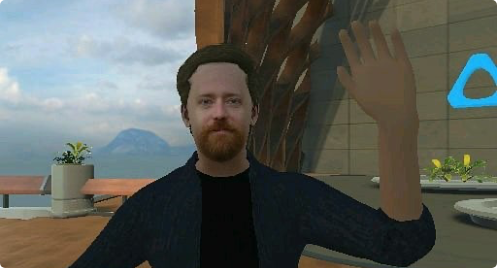VR conferencing, unlike a video conference call, allows for ‘physical interaction’ in a virtual environment. This interaction is also simultaneous, between multiple attendees at different physical locations. Additionally, the remote learning experience is further enhanced through immersive interaction between attendees who are represented by an avatar, which is not possible on a video call. The use of avatars and mapped facial expressions, in a VR conference helps to reinforce the feeling of a personal connection, without the distraction of worrying about how you look on camera or the common feelings of embarrassment many people get when they have to watch themselves speaking. Both of these aspects of VR conferencing, have resulted in greater interaction and engagement and provide more than just another way to relay information. VR conferencing also provides a platform where attendees can socialise with other students or colleagues more naturally. The brain in VR reacts in the same way to perceived physical objects and people as in real life enabling more authentic connections.
How does VR change how information is taught and learned?
Regardless of how remote learning is conducted, the information that is taught is still based around principles of fact retention from written formats. This form of learning often results in a lack of comprehension and ability to apply what has been taught in a real setting. VR significantly changes how information is taught and learned by providing an opportunity for interactive, visual learning. This is revolutionary in certain fields of education and training, such as science, mechanics, and medicine where the only previous opportunities to visualise complex functions or mechanisms would have required attending a physical location, to access equipment.
VR conferencing and training in the workplace
Utilising and training remote workers has dramatically increased the use of VR conferences and the potential for remote learning in the workplace. Prior to COVID-19 there had already been, significant growth in remote working practices and companies providing home workers.
‘A special analysis done by FlexJobs and Global Workplace Analytics found that there has been a major upward trend in the amount of people working remotely in the U.S. In the span of one year, from 2016 to 2017, remote work grew 7.9%. Over the last five years it grew 44% and over the previous 10 years it grew 91%.’
February 13, 2020, Remote Work Statistics: Shifting Norms and Expectations
What is the meaning of spatial audio in a VR conference?
When accessing remote learning via a video conference your brain is forced to interact with contrasting stimuli.
‘ the physical environment in which one is actually present, and the environment presented via the medium.’
http://papers.cumincad.org/data/works/att/27eb.content.pdf
VR helps to eliminate outside distractions and by utilising tools such as spatial audio, which means not only can you sense what direction someone is speaking from, their voice will also get louder when they move closer to you; enhances the feeling of actually being in the same space with other remote learners
Applications for VR conferences and remote learning
- Collaborative learning
- Virtual fields trips
- Highly technical training fields
- Career experience
How will VR conferences change our acceptance of VR, immersive experiences?
Undoubtedly the utilisation of VR is rapidly becoming part of society’s tools to enable social interaction without physical interaction in a fully immersive experience. In the same way, technology has provided new ways of experiencing VR, VR conferences have made VR accessible to a much broader segment of the population. The result is an acceptance of this way of learning and interacting and a continuous drive to push VR technology and develop the applications for immersive experiences.
